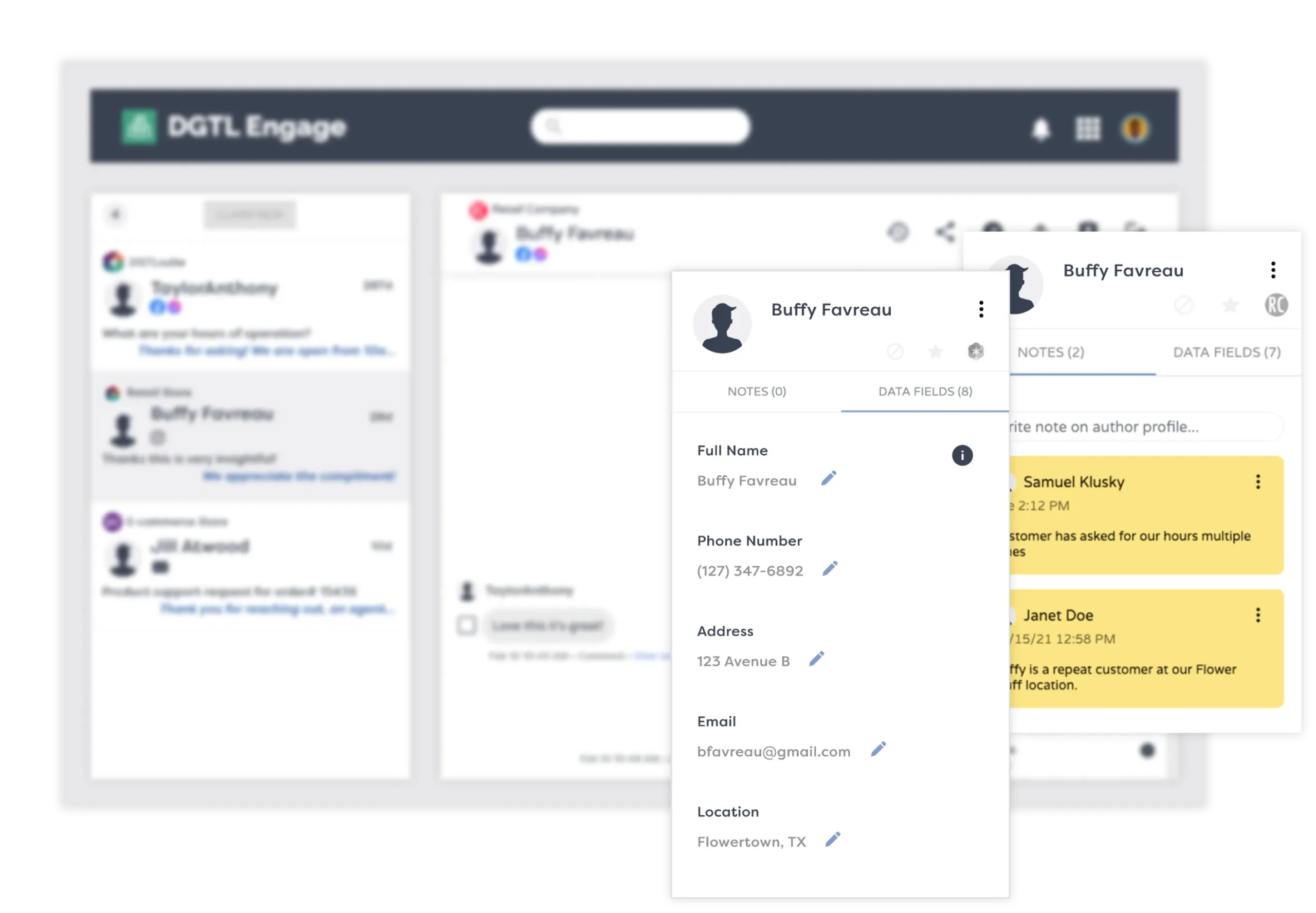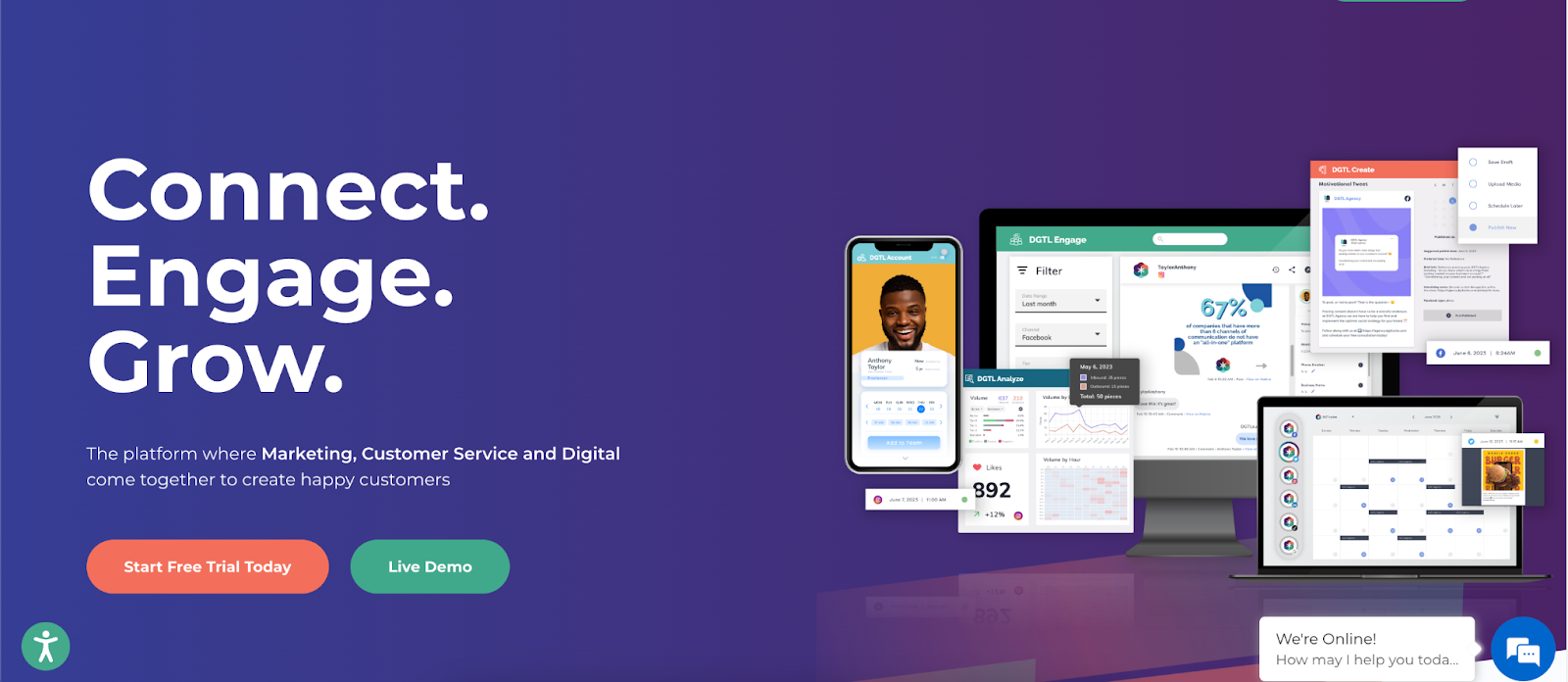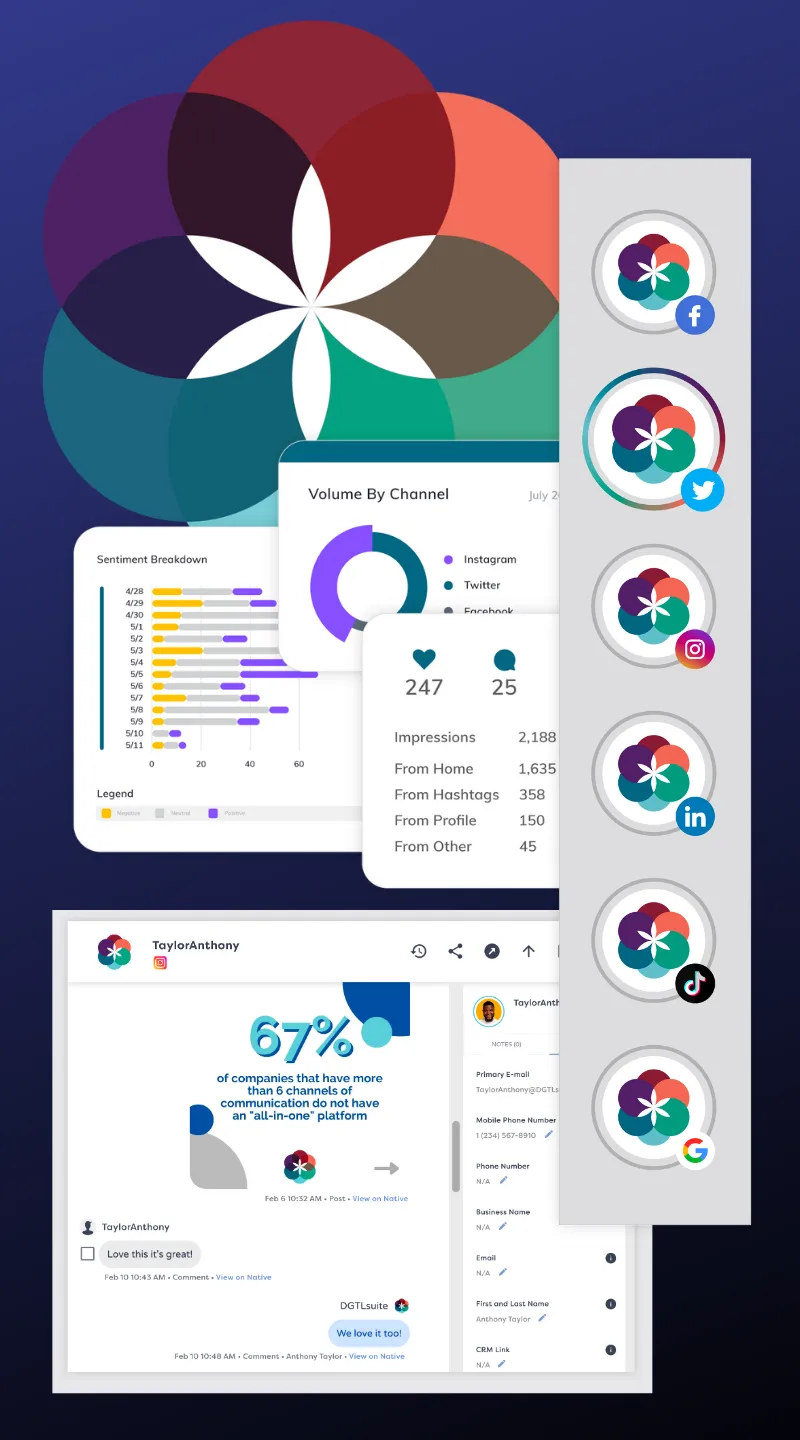Every business knows the frustration of juggling countless customer interactions across emails, social media, live chats, and phone calls.
Customers don’t want to repeat themselves, wait endlessly for a response, or feel like they’re just another ticket in a system. On the other hand, support teams are dealing with the challenge of tracking issues, keeping conversations consistent, and making each interaction feel personal, all while avoiding missed messages and delays.
The solution? Effective customer conversation management. By organizing, tracking, and analyzing every interaction, businesses can deliver quick, personalized responses, making each customer feel heard and valued.
With the right strategies in place, you can transform each customer conversation into an opportunity to build trust, resolve issues efficiently, and maximize loyalty. Let’s dive into how the right approach to conversation management can turn these pain points into strengths.
What’s the Purpose of Customer Conversation Management?
Customer conversation management revolves around making interactions smoother and more personal.
Imagine reaching out to a company and not having to repeat yourself every time you contact them—that’s the magic of effective conversation management.
When businesses organize and track each conversation, they’re able to respond quickly and accurately, which means you get answers fast without feeling like just another number in line.
It also lets businesses personalize each exchange. With a record of past conversations, they can remember your preferences, previous issues, and even the little details, making every interaction feel like it’s tailored just for you.
Plus, when they keep an eye on when and why customers reach out, they can tackle common questions or problems proactively.
 It can make a huge difference for your team, too, especially customer service teams. Having a centralized system where everyone can see what’s happening means fewer mix-ups and more collaboration.
It can make a huge difference for your team, too, especially customer service teams. Having a centralized system where everyone can see what’s happening means fewer mix-ups and more collaboration.
Benefits of Effective Conversation Management
When a business nails conversation management, it’s more than just efficient—it’s transformative for customer relationships. Let’s dive into the key benefits and why they matter:
1. Better Personalization
One of the biggest perks is creating truly personalized interactions. When you keep track of each customer’s history, preferences, and past conversations, it’s easy to add a personal touch.
Customers feel valued when they don’t have to repeat themselves, and they’re more likely to stick around when every conversation feels like it’s made just for them.
2. Increased Engagement Tracking
With solid conversation management, you can closely monitor how often and why customers are reaching out. Tracking this engagement helps you identify patterns, pinpoint common issues, and even understand customer satisfaction better.
Knowing who’s reaching out and what they’re reaching out for can guide you in delivering the support they need exactly when they need it.
3. Improved Customer Experience
Great conversations lead to better experiences. When customers feel like they’re understood and appreciated, it improves their overall impression of your brand.
Effective management reduces response times, builds consistent communication across channels, and removes the frustration of having to repeat information. All of this translates to happier customers who are more likely to become repeat buyers.
4. Faster Resolution Times
With conversation management in place, teams can quickly access past interactions, which makes it easier to provide relevant solutions without delay. This speeds up resolution times, and customers don’t have to sit around waiting for answers.
5. Increased Team Efficiency
When your team has a centralized view of all customer conversations, collaboration becomes easier. No more switching between channels or digging through scattered messages. Everyone stays on the same page, which helps prevent confusion and duplication of work.
It’s a win-win: customers get faster responses, and your team works more effectively.
6. Stronger Customer Loyalty
At the end of the day, effective conversation management fosters loyalty. When customers feel heard and valued, they’re more likely to stay, share good reviews, and even recommend your business to others.
Best Strategies for Managing Your Customer Interactions
Not sure where to start? Here are some top strategies for building and maintaining strong customer relationships through effective conversation management:
Centralize Conversations Across Channels
Nowadays, customers reach out through various platforms—social media, email, live chat, or even support tickets. If these interactions aren’t tracked in one central place, it’s easy to lose track of important details or overlook messages entirely.
That’s why centralizing all customer conversations in a single platform is a must. With a unified system, every team member can see the full interaction history, regardless of the channel, which helps make sure that customers receive timely, consistent responses.
A centralized approach prevents messages from falling through the cracks and allows your team to switch between platforms seamlessly. For example, potential customers might reach out on social media, follow up via email, and then call for more help.
With everything in one place, your team can pick up the conversation where it left off to keep the experience smooth and frustration-free for the customers.
Plus, centralization allows you to gather insights from all channels, which helps you spot trends and improve the overall customer journey.
Use Templates for Quick Responses
Templates can be lifesavers, especially for frequently asked questions or standard responses. Having pre-written responses for common incoming inquiries saves time, promotes consistency, and keeps customers from waiting.
Just remember to add a personal touch—no one wants to feel like they’re talking to a robot, they want to talk to a real person.
Follow Up Consistently
Following up with customers after they’ve reached out—whether it’s about a question, issue, or complaint—shows them that you genuinely care about their experience.
A quick check-in to confirm if their problem was resolved or if they need further help can make all the difference. It’s a small gesture, but it turns a standard interaction into something memorable, showing customers that they’re more than just a number in a queue.
This extra touchpoint not only gives you a chance to increase satisfaction but also opens the door for additional feedback. Sometimes, customers have lingering questions or insights they didn’t think to mention initially, and a follow-up is the perfect opportunity to address those.
Actively Seek Customer Feedback
Asking customers for feedback shows them you’re invested in their experience. A quick survey, a follow-up message, or even a simple “How’d we do?” can go a long way in gathering valuable insights.
By actively seeking feedback, you’re not only finding out what’s working well but also pinpointing areas that could use improvement. Customers are often the best source of ideas for refining services, fixing pain points, or enhancing products—things your team might not catch internally.
Plus, reaching out for feedback shows customers that their opinions genuinely matter. It’s a great way to let them know you value their thoughts and are committed to making their experience even better.
Create Open Communication Flows Within Your Team
Keeping communication open within your team can make a big difference in how smoothly customer interactions go.
When everyone’s sharing updates, insights, and any issues that pop up, it’s way easier to stay on top of customer needs. Open communication builds a sense of teamwork and helps everyone stay in the loop so nothing falls through the cracks.
Think about it—if a customer reaches out on social media, follows up via email, and then calls a service rep, having a team that’s up to date on each interaction makes it simple to pick up right where things left off.
Track and Analyze Customer Interactions
Keeping tabs on customer interactions is key to quality assurance. When you gather data on key metrics, you get a clear picture of what’s working and what needs a little fine-tuning. These include:
- Response times
- Resolution rates
- Satisfaction scores
- Average handling time (AHT)
- Customer effort score (CES)
- Escalation rate
- Repeat contact rate
Digging into these metrics over time can reveal trends that give you a serious edge. For example, if response times are creeping up or satisfaction scores aren’t where they should be, you’ll spot these signs early.
That means you can jump in and make adjustments before small issues snowball. Regular tracking helps you stay in tune with customer needs and adapt your approach so you’re always working toward the desired outcome.
Personalize Every Interaction
When you take the time to personalize each exchange, customers feel valued. Small details, like using their name, remembering past conversations, or mentioning products they’ve used, can make a world of difference.
It shows that you’re not just listening; you actually remember who they are and what they care about.
Personalization also builds trust. Customers are more likely to open up and share their needs when they feel valued and understood. By keeping notes on their preferences or previous issues, you’re setting the stage for smoother, faster, and more satisfying future interactions.
Offer Self-Service Options
Sometimes, customers just want quick answers without reaching out. Self-service options like FAQs, knowledge bases, and help centers empower customers to find solutions on their own. Not only does this improve the customer experience, but it also lightens the load for your team.
For example, let’s say a customer is trying to troubleshoot a basic account issue. Instead of contacting support, they can visit your knowledge base, find a step-by-step guide, and solve the problem in a timely manner.
Meanwhile, your customer service team stays available for customers with more specific needs.
Use Automation Wisely
Automation tools can help handle repetitive tasks. When done right, automation speeds up processes without making interactions feel impersonal. Here are some tasks you can automate:
- Order confirmations
- Follow-up messages
- Appointment reminders
- Survey requests
- Welcome messages
- Shipping updates
- Billing and payment reminders
Just remember to keep a balance—while automation is helpful, customers still appreciate human responses for more complex issues.
How DGTLsuite Can Help You Build an Effective Conversation Management System
DGTLsuite is here to help you turn customer service into a powerful experience across all digital channels. Here’s how DGTLsuite can make a real difference:
Exceed Expectations on Social Media and Everywhere Else
Today’s customers want quick, personal responses, especially on social media. DGTLsuite brings all your interactions together in one place, so your team can respond fast and consistently, whether it’s on:
- TikTok
- X (Twitter)
- Live chat
- SMS
- Mobile applications
- Google reviews
No more juggling channels—just one smooth, connected experience for your customers.
Simplify Digital Customer Service
An overflowing inbox or multiple social feeds can make it tough to stay organized. DGTLsuite cuts through the chaos by giving you a single, holistic view of all conversations.
This means you can see each interaction’s history, keep responses consistent, and give your team the visibility they need to handle support with ease.
 Manage Conversations and Build Real Connections
Manage Conversations and Build Real Connections
Keeping track of customer interactions is easy with DGTLsuite. Each conversation comes with notes and data labels, so your team knows exactly who they’re talking to and what they need—no repeats, no confusion.
DGTLsuite also lets you build customer profiles by saving custom data fields. This can help you track key information about your customers to give them a better, more personalized service.
Save Time and Maximize Efficiency
DGTLsuite is packed with time-saving tools, like automation for repetitive tasks and streamlined workflows that keep your team focused.
The result? Faster responses, happier customers, and more time for your team to engage in the conversations that matter.
Get Insights to Improve Your Impact
DGTLsuite’s dashboards give you a full picture of your team’s performance. Track response times, customer satisfaction, and engagement metrics to understand what’s working and where you can level up.
With these insights, you can make tweaks to improve service quality and keep customers coming back. You’ll also get AI-powered sentiments with natural language processing assigning sentiments to messages in each customer conversation.
Make Customer Interactions a Breeze With DGTLsuite
Turning everyday customer interactions into memorable experiences doesn’t have to be complicated. With the right approach, you can create conversations that feel effortless and genuine, leaving customers not only satisfied but also loyal and eager to return.
 By focusing on clear, personal, and proactive communication, your brand can build trust and stay one step ahead of customer needs.
By focusing on clear, personal, and proactive communication, your brand can build trust and stay one step ahead of customer needs.
Looking to make this a reality? DGTLsuite is designed to help you do just that. With features that bring all your customer conversations into one easy view, automate repetitive tasks, and empower your team to respond meaningfully, DGTLsuite takes the guesswork out of customer management.
Learn how DGTLsuite can help you create stronger, more authentic customer relationships—book a discovery call today.
FAQs About Customer Conversation Management
How does customer conversation management improve customer satisfaction?
Effective conversation management makes sure that customers don’t have to repeat themselves, receive quick and accurate responses, and feel valued through personalized interactions. Customers care about resolving their problems as quickly as possible, and effective conversation management can help do just that.
What are some tools or features that support customer conversation management?
Many tools offer features like centralized communication, automation for repetitive tasks, customer feedback collection, and analytics for tracking key metrics. Platforms like DGTLsuite provide these functionalities to help businesses manage and improve customer interactions.
Can customer conversation management be automated?
Yes, aspects like order confirmations, follow-up messages, and reminders can be automated to save time and ensure consistency. However, it’s essential to balance automation with human interactions, especially for complex issues where a personal touch is needed.
What’s the benefit of centralizing conversations across channels?
Centralizing conversations brings all customer interactions—whether through email, chat, social media, or phone—into one place. This makes it easier for teams to track the customer journey, respond consistently, and avoid missing any details. It also improves team efficiency and reduces response times.






